Extracorporeal shock wave therapy
Synonyms in a broader sense
Extracorporeal shock wave treatment, shock wave lithrotripsy, ESWT, ESWL, high-energy, low-energy shock wave,
English: extracorporeal shock wave therapy
introduction
It can be seen as undisputed that shock waves develop a biological effect that can be used therapeutically.
In experimental studies, different modes of action of the shock wave could be proven, which can explain the positive influence of the shock wave on pseudarthroses (failure of bone fracture healing with connective tissue bridging of the fracture) and tendon attachment diseases.
The shock wave has the following secured biological effects:
- Stimulation of bone growth.
- Angioneogenesis (creation of new blood vessels).
- Release of growth factors and other biologically active proteins.
The current theory is that by activating the above biological processes the body's self-healing processes are set in motion. The sprouting of blood vessels (angioneogenesis) and an increased metabolism can "repair" damaged tendon tissue and heal local inflammation. Depending on the disease being treated, immediate, sustained therapeutic success cannot be expected because the above Tissue reactions take time.
Ultimately, many things remain unexplained about how shock waves work.
history
Shock waves have been successful in the therapy of kidney and urology for over 20 years Ureteral stones used. Only the mechanical properties of the Shock wavewhich, through its energy, leads to a “shattering” of kidney and ureter stones.
It was more by chance that the German urologist Herbst discovered the effect of shock waves on bone tissue. Without being able to explain it, it was shown that shock waves had a stimulating effect on bone tissue. The shock wave had to have a different effect than the purely mechanical one.
It was obvious to take advantage of this property of the shock wave in the treatment of false joints (pseudarthrosis), the problem of which is a lack of osseous breakdown (see below).
Since the beginning of the 1990s, shock wave therapy has been used increasingly in the treatment of orthopedic diseases. Since then, numerous studies have shown the effectiveness of shock wave treatment, especially in the case of tendon attachment diseases (enthesopathy) (see below).
Since the biological effect of the shock wave has not been conclusively clarified and the success of the therapy is difficult to predict in individual cases, the shock wave is not unreservedly approved as a form of therapy by the health insurance companies.
Most private health insurances usually cover the treatment costs incurred for the therapy of tennis elbow, heel spur and calcified shoulder (tendinosis calcarea), since the shock wave effect can be regarded as certain in the data situation.
Physical basics
Shock waves are acoustic pressure waves of extremely short duration. Their physical strength is given as the energy flux density (mJ / mm2).
Various methods make it possible to create the greatest impact of a shock wave by focusing the tissue to be treated in depth (focused shock wave). The shock wave introduced into the body releases its energy in the body when it hits tissue types with different acoustic resistance (bone-soft tissue; calcium-soft tissue). Tissue types with similar acoustic properties as water penetrate the shock wave without damaging influence (skin, muscles, fat etc.)
Technical implementation
The technical implementation of the shock wave treatment is simple in most cases. The therapy head is coupled to the skin of the area to be treated with a contact gel and the energy flux density and the number of pulses are set.The shock waves are then applied at a frequency that is dependent on the energy flow density.
The first impulses are especially painful for the patient when the shock waves hit the inflamed tendon tissue. Anesthesia or any other form of anesthesia is usually not necessary. The pain usually improves with therapy. Depending on the number of shock waves emitted, a therapy session only lasts between 5-15 minutes for the tendon attachment diseases. 2-5 sessions are the rule.
The therapy of pseudarthrosis and femoral head necrosis differs from this. A higher energy flux density is used and there is only one session. Some form of anesthesia usually takes place. A target system is necessary for the calcareous shoulder as well as for the treatment of pseudarthrosis and femoral head necrosis. The therapy head is usually adjusted with the aid of fluoroscopy. A target system is not necessary for the other diseases. One orientates oneself on pain as well as on anatomical landmarks.
Application areas of shock wave therapy
Shock wave therapy for heel spurs
When diagnosing heel spurs, attempts are first made to relieve the symptoms by resting, cooling and using special insoles in conjunction with pain medication. If these approaches do not have the desired effect, shock wave therapy against a heel spur can be carried out. This is an outpatient treatment in which the foot is exposed to short, high-energy ultrasonic pulses that are transmitted through water.
The sound waves are simply passed on through the soft tissue of the body, i.e. muscles and fat, until they hit solid tissue such as bones. This tissue is then vibrated and made unstable. Usually about three treatments are necessary every two to four weeks.
In the case of the heel spur, this means that the shock waves penetrate the skin on the heel, the underlying fatty tissue and the lower leg and foot muscles until they hit the bony heel spur.
Here the energy of the waves is discharged and the heel spur is set in vibrations, which leads to instability. Ultimately, it is mechanically shattered by the high energy. The parts that have become detached must then be broken down by the body itself. In order to achieve this goal, it is necessary to bundle the shock waves in such a way that they are only aimed at the heel spur but not damage the calcaneus.
Medium to high energy rays are used to treat a heel spur. Focused shock wave therapy is recommended, as this has proven to be more effective compared to radial shock wave therapy.
Depending on the cause of the heel spur, the shock wave therapy of the heel spur can cause side effects. If there is an underlying inflammation, either the bursa or the tendon plate on the underside of the foot (Plantar fascia), shock wave therapy may cause pain in the patient during the first few treatments. In this case it is advisable to use a local anesthetic (Local anesthesia). Overall, however, shock wave therapy is considered a variant with comparatively few side effects.
But shock wave therapy of the heel spur also has positive side effects. If the waves hit inflammation, they have a healing effect here, as they stimulate repair mechanisms and lead to the formation of new blood vessels.
Follow-up treatment is usually not necessary. If the pain worsens at the beginning of treatment, it can be relieved initially with anti-inflammatory drugs and should decrease as the treatment progresses.
Overall, shock wave therapy of the heel spur has a good chance of success and is a good alternative that can be preferred to surgery of the heel spur.
Read more on the topic: Shock wave therapy for a calcaneal spur, X-ray stimulation
Shock wave therapy for a tennis elbow
Even with the so-called tennis elbow, the Lateral humeral epicondylitis, immobilization and cooling of the elbow in combination with anti-inflammatory drugs are paramount. If this does not improve the symptoms, alternative forms of therapy, for example with botulinum toxin (Botox) or even considering surgery.
Before these side-effect approaches are carried out, however, shock wave therapy can be initiated. This is often done in conjunction with physiotherapy. The high-energy shock waves, which are transmitted through the tissue to the inflamed tendon attachment, achieve two effects.
- On the one hand, the tissue damaged by the inflammation at the tendon attachment of the forearm extensor muscles is destroyed by the shock waves and can then be broken down by the body.
- On the other hand, the body's own healing, i.e. the reduction in inflammation, is stimulated and the blood flow increased.
Because no bony structures have to be mechanically destroyed in a tennis elbow, low-energy shock waves are used here. The treatment is usually painless, but perceived differently from patient to patient and in some cases requires local anesthesia.
Since small nerves and blood vessels run in the area of the elbow, these too can be damaged by the shock waves. This can lead to bruises, but these will go away on their own after a few days.
Shock wave therapy has high success rates of 60 to 80% in the treatment of tennis elbow. The earlier this therapy is started, the greater the chance of alleviating the inflammation and the existing symptoms and healing them completely in the long run.
Just like the botox treatment, the shock wave therapy of the tennis elbow also has to be paid for in most cases. Only private health insurances take over the treatment in some cases.
Read more on the topic: Shock wave therapy for a tennis elbow
Shock wave therapy for a calcareous shoulder
One speaks of a calcareous shoulder when small lumps of calcium are deposited on the tendons of the shoulder muscles. This can lead to very severe shoulder pain, as the calcium deposits cause a lot of friction against other structures. In technical terminology, the calcareous shoulder is referred to as the tendinosis calcarea.
The shock wave therapy of the calcareous shoulder should only be carried out if the conservative treatment options, such as cooling or anti-inflammatory measures using ointments or medication, show no or insufficient effect. Then the initiation of shock wave therapy is preferable to surgery, since the risks and side effects are significantly lower and no general anesthesia is required.
An exclusion criterion for shock wave therapy is, however, if there is a tear in the rotator cuff, i.e. the muscles that attach around the shoulder.
Shock wave therapy is most frequently used for the calcareous shoulder. It has also proven to be the most successful therapy for this disease.
In the shoulder area, too, the shock waves are focused in advance on the affected areas so that the high-energy waves do not destroy the surrounding tissue. The calcium deposit must be localized using ultrasound or X-ray prior to performing therapy. Medium-energy waves are used to treat the calcareous shoulder, as they have to penetrate the tissue more deeply than elsewhere. The shock waves penetrate as far as the lime scale and lead to destruction. The calcium particles that are created are absorbed and excreted by the body.
Calcium deposits also often dissolve in the natural course of the disease in the calcareous shoulder. However, this can be shortened by shock wave therapy and the symptoms subside more quickly.
The shock wave treatment can cause pain in the patient. In this case, local anesthesia should be performed.
After the shock wave therapy of the calcareous shoulder, the patient should protect his shoulder for one to two days. This means that work that involves lifting your hands above your head should be avoided.
Overall, the pain caused by a calcareous shoulder can be significantly alleviated by shock wave therapy and the mobility of the arms can be increased.
Read more on the topic: X-ray stimulation
Shock wave therapy for Achilles tendonitis
In the area of the Achilles tendon, shock wave therapy can be carried out for inflammation of the tendon (achillodynia). First, however, therapy should be tried using immobilization, pain relievers, and physical therapy. If this does not improve, shock wave therapy is an alternative or, better still, an additional form of treatment.
In the course of the inflammation of the Achilles tendon, small calcium deposits develop on the tendon. Sometimes these also lead to the formation of a heel spur, which can also be treated with shock wave therapy.
After the shock waves have been focused on the inflamed and calcified area of the Achilles tendon, the shock waves are transmitted via water and penetrate the body tissue. As soon as they hit solid tissue, they set it in motion. This is the case with limescale deposits. When these are set in vibration, they become increasingly unstable and are mechanically destroyed by the vibrations. The smallest particles that are created can be absorbed and excreted by the body itself. A treatment session usually lasts around 5 to 10 minutes.
Shock wave therapy also has a positive effect on inflammation, as it stimulates the body's self-healing processes. Pain from an inflamed bursa or directly from the tendon is also increasingly relieved. In addition, the blood circulation in the irradiated area is stimulated by the fact that new vessels form in this area.
The highest healing rate for inflammation of the Achilles tendon is achieved if, in addition to shock wave therapy, special strength training for the Achilles tendon is regularly carried out.
Read more on the topic: Therapy of achilles tendinitis
Shock wave therapy for kidney stones
Originally the Shock wave therapy for the treatment of Kidney stones and Gallstones developed.
Small stones can often be excreted from the body on their own by conservative methods such as drinking, exercise, and warmth. However, if this does not relieve the symptoms, or if the kidney stone exceeds a certain size (8mm), another form of therapy should be selected. Up to a size of about 2 to 2.5 cm Shock wave therapy has proven to be a successful treatment method.
The shock waves are focused on the kidney stone and transmitted through the body. For this purpose, the exact location of the stone must first be clarified by ultrasound or X-ray examinations. Since the stone has a solid structure in contrast to the surrounding tissue, it is stimulated and shattered by the waves. The individual parts of the stone are then excreted through the urinary system.
Please refer: Smash kidney stones
A treatment takes about half an hour to an hour and usually does not require an anesthetic. However, some patients find the shock waves in the back area painful. Local anesthesia can be used in these cases.
Shock wave therapy is not suitable for the acute treatment of kidney colic caused by the stone, but is carried out at colic-free intervals. However, it can happen that colic occurs due to the fragmentation of the stone and the resulting pieces of stone. This is the case with about every third patient. In addition, a bruise can form, as the mechanical impact can lead to minor injuries in the kidney area.
Further clinical pictures
Further clinical pictures that can be successfully cured by shock wave treatment are:
- Golfer arm (tendinosis humeri ulnaris)
- Patellar tip syndrome ("Springer's knee")
- Trochanteric bursitis (inflammation of the bursae on the hip bone)
- Achillodynia (inflammation of the sliding tissue of the Achilles tendon)
- Supraspinatus tendon syndrome (shoulder tendon disease)
- Shin splints
- Myofascial pain syndromes (muscle tension disorders) (trigger point treatment)
- Atlas correction
False joints (pseudarthrosis)
Pseudarthroses were the first orthopedic application area for shock waves. This therapy has been used successfully for a long time. Despite all the positive experiences, shock wave therapy is not part of the general standard in the treatment of pseudarthrosis. The surgical intervention with freshening the non-healing fractures and the deposition of growth bones (Cancellous bone) are still the common procedure. Such interventions are almost without exception more complicated to carry out than the first operation and involve corresponding risks.
The attempt to bring about a fracture healing through a one-time high-energy shock wave treatment is almost free of side effects and quite often successful. If the procedure is correct, successful treatment is possible in approx. 75% of the cases. In Austria, shock wave treatment is already part of the standard procedure for pseudarthroses.
Femoral head dying (femoral head necrosis)
After the shock wave has been used successfully in the treatment of pseudarthrosis for a long time, the range of applications is increasing. It is only logical that the bone-stimulating effect of shock wave therapy is also increasingly used for the treatment of femoral head necrosis and other aseptic osteonecrosis (e.g. osteochondrosis dissecans).
From a physical point of view, it has been proven that shock waves also develop their effect in the femoral head. Approx. 50% of the energy flux density (measure of the strength of the shock wave; mJ / mm2) reaches the inside of the femoral head. Since the shock wave in the bone quickly loses its intensity, the shock waves must be applied precisely. X-ray fluoroscopy is necessary for this.
It is too early to make a final assessment. However, there are indications that high-energy shock wave treatment can be more successful than the usual surgical drilling of the bone defect with subsequent bone transplantation.
However, good and very good results can only be expected in the early stages of the femoral head necrosis.
You can find further information under our topic: Femoral head necrosis
Cellulite (orange peel)
For some time now, shock wave therapy has also been used to treat cellulite.
Cellulite, also known as orange peel, is a widespread condition among women, affecting 80% of people over 20 in Germany. In general, cellulite is not a disease, but many women are very annoyed by this cosmetic flaw. Cellulite occurs much less often in men, as the male subcutaneous fat is much firmer and has more connective tissue fibers.
There are many different therapy options against orange peel offered, but mostly no satisfactory improvements in the problem are achieved. A study published in 2013 showed the effectiveness of shock wave therapy in combination with a sports program in the presence of cellulite.
Course of treatment
The total duration of therapy is six weeks. During this period, shock wave therapy is carried out on the affected areas once a week. A therapy session lasts approximately 20 minutes. In addition to this therapy, daily strengthening training of the gluteal region must be carried out. Only the combination of shock wave therapy and strengthening training proved to be effective in the study.
In addition, consistent conditioning training that burns fat can aid treatment and contribute to better results.
Treatment outcome
Shock wave therapy for cellulite can usually not completely eliminate it. A reduction of 30% is realistic. It has been proven that the containment of cellulite lasts for about a year, after which the therapy may have to be repeated.
Exactly how shock wave therapy works for cellulite is not clear.
Treatment costs
Since cellulite is not a disease in the strict sense of the word, shock wave therapy for cellulite is not covered by health insurances, so the treatment itself has to be paid for. The cost of a therapy session is around 250 euros, so the six-week treatment costs around 1500 euros in total.If the effect of the treatment disappears after about a year, it may be necessary to invest this sum again in order to maintain the cosmetic result.
Conclusion
Shock wave therapy for cellulite is a treatment option with few side effects, but it is quite expensive. In contrast to other therapies that are offered on the market, the effect has been scientifically proven. It is important to note that the effect has only been proven in connection with strength training.
Here you can find more information about our cellulite topic.
Appointment with ?

I would be happy to advise you!
Who am I?
My name is dr. Nicolas Gumpert. I am a specialist in orthopedics and the founder of .
Various television programs and print media report regularly about my work. On HR television you can see me every 6 weeks live on "Hallo Hessen".
But now enough is indicated ;-)
In order to be able to treat successfully in orthopedics, a thorough examination, diagnosis and a medical history are required.
In our very economic world in particular, there is too little time to thoroughly grasp the complex diseases of orthopedics and thus initiate targeted treatment.
I don't want to join the ranks of "quick knife pullers".
The aim of any treatment is treatment without surgery.
Which therapy achieves the best results in the long term can only be determined after looking at all of the information (Examination, X-ray, ultrasound, MRI, etc.) be assessed.
You will find me:
- Lumedis - orthopedic surgeons
Kaiserstrasse 14
60311 Frankfurt am Main
You can make an appointment here.
Unfortunately, it is currently only possible to make an appointment with private health insurers. I hope for your understanding!
For more information about myself, see Lumedis - Orthopedists.
Cost of shock wave therapy
Although shock wave therapy is a much cheaper method than surgery, the costs are usually higher Not covered by the statutory health insurance. The health insurance companies give different reasons for this. In some cases, however, the treatments are subsidized by the health insurance company. This depends on the individual case and must be requested from the health insurance company.
However, private health insurances usually cover the costs of shock wave treatment in full.
The cost of shock wave therapy is around € 60 to € 100 per session and in most cases is paid for by the patient himself. The total costs then amount to around € 200 to € 300 for an average of three sessions.
Complications
Serious complications are not to be feared if the shock wave is used properly. Typically, harmless swelling and bleeding (bruise / hematoma) can occur in the treatment area.
Please note the following contraindications:
- No use in the lungs / chest area.
- No application via nerves and vessels.
- Not to be used for bleeding disorders.
Criticism of shock wave therapy
The Shock wave therapy is a therapy method that has not been conclusively investigated. The effect of the shock wave has been proven, but the mechanism that leads to the tissue reaction and thus to the success of the therapy is not fully known.
Thus, there is also a lack of information about possible positive and negative interfering influences that could influence the therapeutic result. Therefore, the result of shock wave therapy is difficult to predict. Everything depends on whether the desired tissue reaction can be triggered or not.
The uncertainties that still exist in shock wave therapy are also reflected in its clinical application. While in terms of having the Shock wave Treatable clinical pictures are largely in agreement, the handling of the optimal energy flux density (shock wave intensity), the pulse rate and the necessary therapy sessions is sometimes very different.
Another problem is that the statutory health insurance companies Despite proven effectiveness, a treatment indication for calcified shoulder, pseudarthrosis (non-healing fractures), tennis elbow, Achilles tendonitis, as well as the heel spur Not see and consequently do not assume the costs in these cases either.
At privately insured is usually after previous Examination of the assumption of costs a treatment easily possible.
outlook
The more we know about the mode of action of the shock wave, the more it can be expected that the field of application of the shock wave will expand. A use in treating the Osteochondrosis dissecans or with heterotopes Ossifications (e.g. muscle calcifications after hip prosthesis surgery) is currently being investigated.
Shock wave therapy will continue to have a solid and justifiable role in conservative orthopedics.




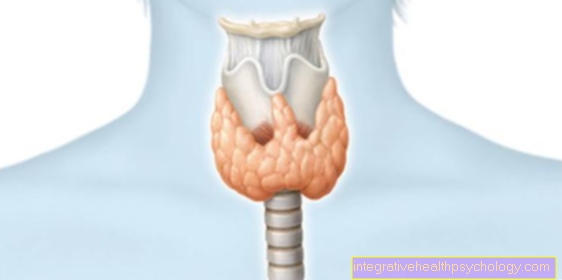

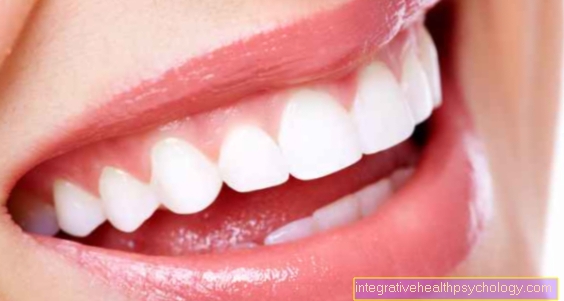
.jpg)
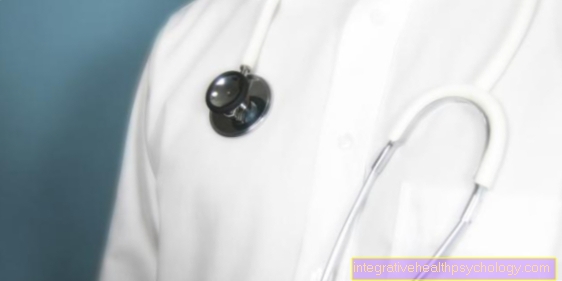
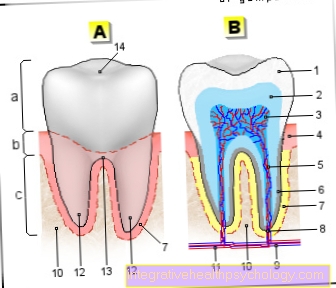








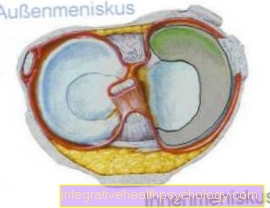

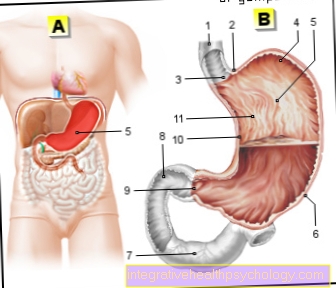

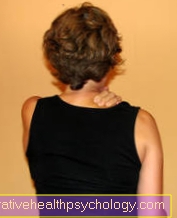





.jpg)
.jpg)